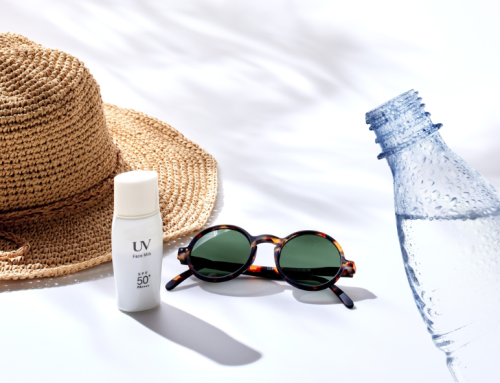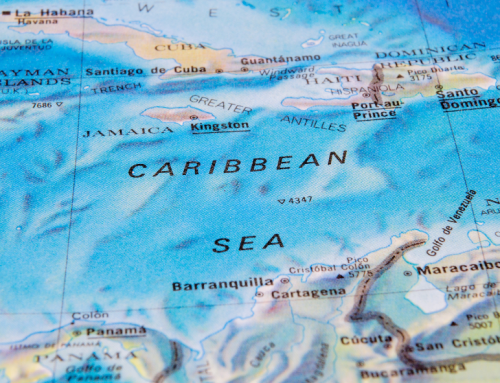Sailing in the Caribbean: Essential Tips and Routes for Beginners
Sailing the Caribbean is a dream for many beginners, offering calm waters, beautiful islands, and short sailing distances that make it easier to learn and enjoy. Choosing the right route and boat tailored to your experience is key to having a smooth and memorable trip. The Caribbean’s clear seas and warm climate create an ideal setting for your first sailing adventure.
Before you set sail, it’s important to prepare well. Knowing the basics of navigation, safety, and how to handle your boat will help you stay confident on the water. This guide will walk you through what you need to know to make planning your trip easier and to ensure you get the most out of every moment sailing in this unique region.
Key Takeaways
- Plan your route carefully to match your skills and interests.
- Pick a boat that suits your experience and trip length.
- Prepare with safety and navigation basics before you sail.
Planning Your Caribbean Sailing Route
You’ll need to pick your sailing stops carefully, plan your trip based on good weather, and follow routes well-suited for beginners. These choices affect how smooth and safe your trip will be.
Choosing the Best Destinations for Beginners
Pick islands that are close to each other and have calm waters. The British Virgin Islands, the Grenadines, and the US Virgin Islands are great options. They offer sheltered anchorages and easy access to marinas. Look for places with good facilities, like fuel docks, places to restock supplies, and clear entry rules. Avoid spots known for strong currents or rough seas, especially when you’re learning.
Friendly locals and approachable harbors can also make your stops more pleasant. Prioritize islands where you can easily get help in case of trouble.
Recommended Itineraries for First-Time Sailors
Start with a 5 to 7-day trip visiting 3 to 5 islands. This keeps your days shorter and lets you adjust to sailing life. A good beginner route might be Tortola to Virgin Gorda, then on to Jost Van Dyke, and back. This loop has short distances and protected waters.
Another simple option is exploring the Grenadines, stopping at Bequia and Mustique, which are fairly close to each other. Use a map or guide to check distances and plan overnight stays.
Make sure to factor in extra time for unexpected delays like weather changes or boat checks.
Understanding Caribbean Weather and Seasons
The best sailing weather is from December to April. This is the dry season, with steady trade winds between 10 and 20 knots, which are ideal for sailing.
- Avoid the hurricane season, which runs from June to November. Hurricanes and tropical storms bring heavy winds and dangerous seas.
- Keep in mind that trade winds usually blow east to west. This makes sailing west easier than east because you have the wind behind you. If your route requires going east, expect slower progress and rougher conditions.
- Check weather forecasts daily and be ready to adjust your plan if storms approach. The weather can change quickly in the Caribbean.
Selecting the Right Sailboat
Choosing the right sailboat affects your comfort, safety, and enjoyment while sailing the Caribbean. Consider the boat type, key features, and whether you want to own, rent, or charter. These factors will guide your decision based on your experience level and trip plans.
Monohull vs Catamaran for Novices
Monohulls are traditional single-hull boats. They offer a classic sailing feel and usually perform better in stronger winds. You might find them easier to handle if you want a responsive boat that heels or leans under sail. Monohulls are often less expensive to rent or buy.
Catamarans have two hulls, making them more stable and spacious. They provide more living space and tend to rock less, which can reduce seasickness. However, catamarans can be wider, making docking and maneuvering in tight marinas trickier for beginners. They often cost more but offer extra comfort.
For your first Caribbean trip, think about stability versus handling. If you want comfort and less motion, a catamaran works well. If you prefer a more traditional sailing experience and easier handling under sail, a monohull might suit you better.
Essential Boat Features and Equipment
When selecting a sailboat, look for certain features to ensure safety and comfort. Make sure the boat has reliable navigation tools like GPS, compass, and radar. Good communication devices and safety gear, such as life jackets, flares, and a well-maintained anchor, are critical.
Check the boat’s cabin layout to match your group size. You may want multiple sleeping cabins and heads (bathrooms), depending on your crew. Adequate storage space for provisions and easy access to fresh water are important for longer trips.
Also, evaluate the engine reliability and fuel capacity, especially if you plan to explore islands away from strong winds. A boat with reinforced hulls and good maintenance records will help keep your trip smooth and worry-free.
Charter Options and Considerations
Chartering a sailboat is popular for first-time sailors. It allows you to rent without the costs of ownership and choose boats equipped for beginners. You can select between bareboat charters, where you sail yourself, or crewed charters with a hired captain and crew.
- Consider the charter company’s reputation, insurance coverage, and support services. Ask about training or briefings if you opt for bareboat charters to build your confidence.
- Plan your itinerary carefully and check if the charter allows visits to various islands without extra fees. Some boats may have restrictions on where you can sail, so clarify those details before booking.
Chartering helps you experience different boats and islands with less commitment and risk, making it a smart choice for your first Caribbean sailing adventure.
Preparation and Safety Onboard
Before you set sail, it’s important to get ready with the right gear and understand the safety measures on board. You also need to take steps to protect your health during the trip.
Packing the Essentials for a Caribbean Voyage
- Pack lightweight, breathable clothing for hot weather. Include a hat and sunglasses to protect against the strong sun. Bring reef-safe sunscreen to avoid harming marine life.
- Carry waterproof bags to keep your belongings dry. Don’t forget essential documents like your ID, passport, and travel insurance.
- For gear, include sturdy shoes for the deck, swimwear, and a light jacket for cooler evenings. A small first aid kit and seasickness remedies are also helpful.
- You may want to bring a flashlight and a reusable water bottle. Keep electronics and valuables secure in waterproof cases or pouches.
Safety Practices and Emergency Procedures
- Familiarize yourself with the boat’s safety equipment, such as life jackets, fire extinguishers, and emergency signals. Always wear a life jacket when instructed or during rough weather.
- Learn where the lifeboats and emergency exits are located. Listen carefully during safety briefings and ask questions if anything is unclear.
- Work with the crew to understand basic emergency procedures like man-overboard drills and fire safety. Stay calm and follow instructions in case of an emergency.
- Avoid risky behavior on deck, especially when the boat is moving. Keep your balance by holding rails, and never obstruct walkways or emergency equipment.
Health and Medical Preparations
- Check that your routine vaccinations are up to date before sailing. You may also want to consult your doctor about travel vaccines based on your itinerary.
- Bring any prescription medications you need, along with a copy of the prescription. Pack extras in case your trip is extended.
- Stay hydrated, as the Caribbean sun can quickly dehydrate you. Drink plenty of fresh water and avoid excessive alcohol to reduce risks.
- Use insect repellent to avoid bites from mosquitoes or other insects. Practice good hygiene to limit the chance of stomach issues during your trip.
Navigation and Boating Skills for First Timers
When sailing in the Caribbean, you will need to understand how to navigate safely, handle your boat at anchor, and follow communication rules. These skills help you avoid common hazards and stay connected with other boats and the coast guard.
Basic Navigation Tips in the Caribbean
- Start by learning to read nautical charts and use a GPS device. The Caribbean has many islands, reefs, and shallow areas, so knowing your position is crucial.
- Use landmarks like lighthouses and coastal features during the day. At night, rely on your compass and electronic navigation tools.
- Always check the weather before sailing. Sudden storms and shifting winds are common here. Plan your route to avoid strong currents and shallow waters where your boat might run aground.
- Keep a lookout for other boats and marine life, especially in popular cruising zones. Staying alert can prevent collisions.
Anchoring and Mooring Techniques
- Learn how to anchor your boat safely to avoid drifting. Choose sandy or mud bottoms rather than rocky ones; they provide better holding power.
- When you drop anchor, let out enough chain or rope — usually 5 to 7 times the water depth — to keep the anchor secure.
- Try to anchor away from coral reefs to protect the environment and your boat’s hull.
- For mooring, follow instructions from local marinas or mooring buoys. Always approach slowly and from the windward side to control your speed.
- Practice tying knots like the cleat hitch and bowline to secure your boat.
Communication and Maritime Regulations
- Use VHF radios to communicate with other boats and ports. Channel 16 is the international distress and calling channel.
- Know the basic maritime signals, like flags and horn blasts, to show your intentions or warn others.
- Follow local regulations, including speed limits and no-wake zones near harbors.
- Always file a float plan before sailing. Share your route and return time with someone onshore.
- Respect protected areas and marine parks by sailing only in allowed zones. This keeps the Caribbean clean and safe for everyone.
Making the Most of Your Caribbean Experience
When sailing the Caribbean, you can enjoy vibrant local culture, exciting activities on land and sea, and ways to protect the environment. Choosing how you engage with these elements will shape your trip and create lasting memories.
Local Culture and Cuisine
Immerse yourself in the diverse cultures of the Caribbean islands. Each island offers unique music, art, and traditions shaped by African, European, and indigenous influences. Try local dishes like jerk chicken in Jamaica, conch fritters in the Bahamas, or roti in Trinidad. Visiting local markets or small eateries can give you an authentic taste of island life.
Engaging with locals by attending festivals or exploring villages helps you understand their way of life. Simple gestures like greeting in the native language or respecting customs go a long way.
Top Activities and Shore Excursions
Plan shore excursions that match your interests, from snorkeling in coral reefs to hiking rainforest trails.
Popular activities include:
- Swimming with sea turtles in the British Virgin Islands
- Exploring historic forts in Puerto Rico
- Kayaking through mangroves in St. Lucia
Many islands offer short, calm sailing routes that are perfect for beginners. Look for guided tours that include transportation and gear to maximize your time onshore.
Environmental Responsibility and Conservation
Protecting the Caribbean’s natural beauty is essential. Always follow rules about wildlife and coral reefs.
- Use reef-safe sunscreen to avoid harming marine life. Avoid touching or stepping on corals when snorkeling or diving.
- Dispose of waste properly and limit single-use plastics on board. Support local conservation groups or participate in beach clean-up events if possible.
- Being eco-conscious ensures that future sailors can enjoy the same pristine waters and landscapes as you.
Plan your Caribbean escape with Sail Caribe. Call 888-234-2050 to reserve a yacht today.







Leave A Comment